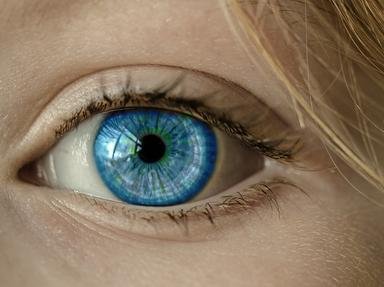Quiz Answer Key and Fun Facts
1. Which eye disorder causes an opacity in the lens, which if left uncured, may blind you?
2. Which of these sentences most accurately describes the function of the eyelid?
3. Which sentence is untrue about the function of the eyebrow?
4. I'm outside in the blazing sun. It is shining heavily. For some reason, there's a mirror on a wall. I look inside it, what do I notice about my eyes?
5. When reading a book, your lenses need to adjust to focus the light that enters the eye. Which of these statements is true as to how the lenses have adjusted by the ciliary muscles?
6. There are 5 areas of the visual cortex, known as V1, V2 etc. Which area primarily deals with interpreting motion?
7. Which of these is located between the cornea and lens, maintains the convex shape of the cornea with its pressure, provides nutrition for ocular tissues, and carries away the waste from said tissues?
8. Given that in rods, the photochemical that breaks down and then sends an impulse up the optic nerve is called rhodopsin, which chemical do cones contain for the same purpose?
9. In front of the photosensitive cells are two other types of cells. But which are the ones the light would hit first?
10. The ganglion cells and bipolar cells are in front of the rods and cones, and are all in the retina - but can you put them in order of quantity (greatest - smallest)?
Source: Author
malik24
This quiz was reviewed by FunTrivia editor
crisw before going online.
Any errors found in FunTrivia content are routinely corrected through our feedback system.

